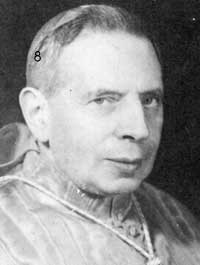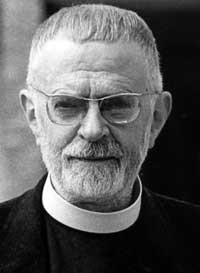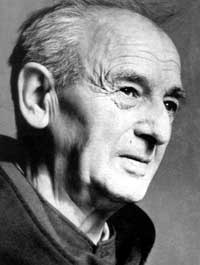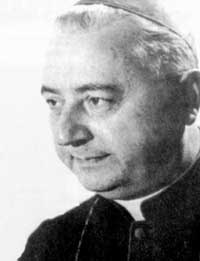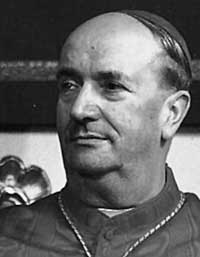WHY THE NEW RITE OF EPISCOPAL CONSECRATION IS VALID
Following the Council, in 1968 a new rite for the ordination of bishops was promulgated. It was, in fact, the first sacrament to undergo its "aggiornamento," or updating.
In 1978, a certain Fr. Athanasius Kröger, O.S.B., published a study in the Una Voce Korrespondenz (Vol. 2, pp. 95-106), in which he raised doubts about the validity of episcopal consecrations accomplished with the new rite. According to him, the new form was not specific enough, and it created a situation analogous to that of the Anglican ordinations that were declared null and void by Pope Leo XIII.
Later, Dr. Rama Coomaraswamy published a study entitled "The Post-Conciliar Rite of Holy Orders."1 Dr. Coomaraswamy concluded that the new episcopal consecrations are "almost certainly invalid." When updating his study, posted on his Internet site in 2002, he claimed that his study had never been refuted.
For about a year now, various documents have been circulated on the Internet claiming "to demonstrate" the invalidity of the ordination of bishops performed according to the rite of Pope Paul VI. Taking up the arguments of the two aforementioned studies, they add several other considerations, notably about a change in the matter of the sacrament.
In the interest of bringing a little order and clarity to the question, we shall apply ourselves to studying the validity of the episcopal consecrations according to the ritual published by the Vatican in 1968. We shall proceed according to the Scholastic method so as to treat of the matter as rigorously as possible....We take the position (today, the most widely held) of the sacramentality of the episcopate; so doing, we adopt the hypothesis that is most unfavorable to the validity of the new rite. [N.B. Theological debate over this point has taken place for centuries. Although the Church has defined that there are precisely seven sacraments, it remains unclear whether episcopal consecration remains part of the sacrament of Holy Orders or is merely "a sacramental," an ecclesiastical ceremony wherein the powers of the episcopate, "bound" in the simple priest, are "freed" for the exercise of the fulness of the priesthood.–Ed.]
The Difficulties
(Objections Favoring In-validity)
Analyzed according to the four causes, a sacrament is a compound of matter (material cause) and form (formal cause); it is administered by a minister (efficient cause) who must have the intention of doing what the Church does (final cause). For a sacrament to be valid, the four causes must be respected. It is enough for only one of them to be deficient to render a sacrament invalid.
Defect of Form
1) The form of consecration in the 1968 Pontifical is completely different from the former rite.2 Here are the two formulas:
The form according to the traditional rite:
Fulfill in Thy priest the completion of Thy ministry, and adorned in the ornaments of all glorification
sanctify him with the moisture of heavenly unguent.3
The new form:
So now pour out upon this chosen one that power which is from you, the governing Spirit whom you gave to your beloved Son, Jesus Christ, the Spirit given by him to the holy apostles, who founded the Church in every place to be your temple for the unceasing glory and praise of your name.4
It is easy to see that the two formulas have nothing in common.
Now, it seems that the new form is insufficient. Indeed, the grace that is asked, the "Spiritus principalis" ("the governing Spirit," the Spirit that makes rulers) certainly is here the Holy Spirit, from the fact that the word is capitalized.
The formula is much too vague, for all the sacraments give the Holy Spirit [not Holy Orders alone–Ed.].
In order for the sacrament to be valid, it would be necessary to signify the specific grace given by the sacrament. In the old form, the "ministerii tui summum" (the completion of Thy ministry) was asked, which, in the context, clearly means the highest degree of priesthood, namely, the episcopacy. Consequently, it does seem that the new form is invalid because it does not signify precisely enough the grace of the episcopacy.
As a confirmation of the insufficiency of the new form, Pope Leo XIII's declaration of the nullity of the Anglicans' priestly ordinations can be cited. Among the arguments he made was that of insufficiency of form:
All know that the sacraments of the New Law, as sensible and efficient signs of invisible grace, ought both to signify the grace which they effect, and effect the grace which they signify. Although the signification ought to be found in the whole essential rite–that is to say, in the matter and form–it still pertains chiefly to the form; since the matter is the part which is not determined by itself, but which is determined by the form....But the words which until recently were commonly held by Anglicans to constitute the proper form of priestly Ordination–namely, "Receive the Holy Ghost," certainly do not in the least definitely express the Sacred Order of Priesthood, or its grace and power....This form had indeed afterwards added to it the words "for the office and work of a priest," etc.; but this rather shows that the Anglicans themselves perceived the first form was defective and inadequate. But even if this addition could give to the form its due signification, it was introduced too late, as a century had already elapsed since the adoption of the Edwardine Ordinal, for, as the hierarchy had become extinct, there remained no power of ordaining.5
2) To justify the adoption of a new form of episcopal consecration, Pope Paul VI explained in his Apostolic Constitution Pontificalis Romani, which accompanied the promulgation of the new rites of ordination:
...[I]t was judged appropriate to take from ancient sources the consecratory prayer that is found in the document called the Apostolic Tradition of Hippolytus of Rome, written in the beginning of the third century. This consecratory prayer is still used, in large part, in the ordination rites of the Coptic and West Syrian liturgies.6
Now, Dr. Coomaraswamy tells us:
While [Paul VI] is correct in pointing to the "Apostolic Tradition of Hippolytus" as the source of his new rite, he stretches the truth to the limit in stating that this highly questionable document is "still used in large part in the ordination rites of the Coptic and Western Syrian liturgies." In fact the Hippolytus text has almost nothing in common with the eastern rites, and the crucial words–especially the critical phrase of "governing spirit"–is nowhere to be found within these eastern rites.7
As proof of his affirmation, Dr. Coomaraswamy gives the text of the consecratory prayer from the Pontifical of the Antiochean Syrians, in which one finds nothing in common with Pope Paul VI's form. It thus seems that they wanted to mask the insufficiency of the new form by a trick. Or, at the very least, they gave proof of remarkable incompetence.
3) The essential words of the form according to the new rite ("So now pour out...praise of your name") reflect the theology of the episcopacy as a power of governing only: either as a power of jurisdiction, or as an aptitude infused into the soul to receive jurisdiction; and these essential words omit the idea of the episcopacy as the supreme degree of the priesthood.
It is only in the words following the essential part that mention is made of the function of "high priest."
On the contrary, in the traditional Roman rite, the designation of the supreme degree of priesthood is contained in the essential part of the form by the words "Fulfill in Thy priest the completion of Thy ministry."8
Consequently, in the essential part of the form, the sacerdotal power of the bishop is rejected, and only his pastoral power is kept. Thus there is exclusion, or suggestion of exclusion, of what is, according to traditional theology, the essential power of the bishop: the completion or plenitude of the power of Order by the plenitude of the sacramental character of Order.
4) The new form, while taking its inspiration from it, does not reproduce that of the Apostolic Tradition. Let us compare the two.
A genitive has been transformed into an accusative9: principalis Spiritus becomes Spiritum principalem; super hunc electum was added, without mentioning other minor modifications.10
In short, the consecratory prayer of Pope Paul VI is inspired by, but does not reproduce that of the Apostolic Tradition of Hippolytus; it constitutes an artificial creation of Dom Bernard Botte in 1968. Consequently, this form is invalid.11
New Rite Et nunc |
Text of Hippolytus nunc |
Translation: So now pour out upon this chosen one that power which is from you, the governing Spirit whom you gave to your beloved Son, Jesus Christ, the Spirit given by him to the holy apostles, who founded the Church in every place to be your temple for the unceasing glory and praise of your name. |
Translation: Now pour forth on him that power which is from Thee, the governing Spirit whom Thou gave to Thy beloved Son Jesus Christ, whom He gave to the holy apostles who founded the Church in the place of Thy sanctuary unto the glory and unceasing praise of Thy name. |
Defect of Matter
This is a relatively recent argument, since it is not found in the writing of Fr. Kröger or Dr. Coomaraswamy, even in his posting of 2002.
In the traditional rite, the bishop-elect receives the imposition of the Gospels book upon his neck. Then the imposition of the hands (the matter of the sacrament) takes place, followed by the consecratory preface which contains the form of the sacrament (the words of consecration).
In the new rite, the imposition of the Gospels book has been modified and displaced: it is placed upon the bishop-elect's head (and no longer upon his bowed neck), between the imposition of the hands and the consecratory preface (and no longer before the imposition of the hands).
The result, it seem, is a dissociation between the matter and the form, a dissociation that can render the sacrament invalid. In the sacrament of baptism, for example, if the priest were to pour the water in silence, then add another rite (for example, the imposition of salt on the tongue), and finally pronounce the words ("I baptize thee in the name of the Father, etc."), the baptism would be invalid.
A further difficulty (which does not seem to have been remarked before) is that, in the new rite, the consecrator speaks the words of the sacramental form with hands joined. In the old rite, he spoke them with his hands extended in front of his breast, which prolonged the rite of the imposition of the hands and manifested the union of matter and form.
In order to show clearly the difference in the course of the ceremony in the two rituals, they are reproduced here (see "The Ceremony before Vatican II" and "The Ceremony since Vatican II.")
Comparisons |
||
The Ceremony
|
The Ceremony
|
Second typical
|
Defect of Intention
1) One could raise one other difficulty against the validity of the new ritual: intention.
It has been declared that this ritual was adopted with an ecumenical intention. The Copts and the western Syrians are mentioned. The Anglicans could have been mentioned, too, since they have also adopted a similar rite, derived from the Apostolic Tradition of Hippolytus.
Now, such an intention can corrupt the validity of a rite. Indeed, among the reasons Pope Leo XIII gave for the invalidity of the Anglican ordination rite is defect of intention:
With this inherent defect of form is joined the defect of intention, which is equally essential to the sacrament. The Church does not judge about the mind and intention in so far as it is something by its nature internal; but in so far as it is manifested externally she is bound to judge concerning it. When any one has rightly and seriously made use of the due form and the matter requisite for effecting or conferring the sacrament he is considered by the very fact to do what the Church does. On this principle rests the doctrine that a sacrament is truly conferred by the ministry of one who is a heretic or unbaptized, provided the Catholic rite be employed. On the other hand, if the rite be changed, with the manifest intention of introducing another rite not approved by the Church and of rejecting what the Church does, and what by the institution of Christ belongs to the nature of the sacrament, then it is clear that not only is the necessary intention wanting to the sacrament, but that the intention is adverse to and destructive of the sacrament.12
2) As regards intention, a final difficulty arises from the fact that the new rite was introduced for the purpose of applying the new conciliar theology concerning the episcopacy. Here is the comment of Canon André Rose expressed in an article published in La Maison Dieu, No. 98 (the journal of pastoral liturgy edited by Cerf Publishing)13:
On June 18, 1968, the Apostolic Constitution Pontificalis Romani recognitio was promulgated, approving the new ceremonial for the ordination of deacons, priests, and bishops. The most striking change introduced by this document is undoubtedly the introduction of a new consecratory prayer for ordination to the episcopacy.
The Roman document cites the doctrine of the Constitution Lumen Gentium on the episcopacy as the supreme degree of the sacrament of Holy Orders....It is to better emphasize the doctrine of the Second Vatican Council that the formula of the consecration prayer for episcopal ordination is now replaced by a new prayer, extracted from the Apostolic Tradition of Hippolytus, a document from the early third century.14 Nonetheless, this ancient text has always been in usage to the present day, in a more developed form, in the liturgy of the Copts and western Syrians.15
This intention to apply the conciliar doctrine could be disquieting when one knows that the Council gave a heterodox teaching on collegiality, a doctrine that it was necessary to correct by a nota praevia which is hardly mentioned in our day.
This disquietude could increase from the fact that the ritual in use at the time was reproached for having been modified in the 12th century in such a way as "to veil somewhat the universal collegial power of the bishops over the entire People of God."16
|
Giacomo Cardinal Lercaro
Fr. Louis Bouyer, Oratorian
Dom Bernard Botte
Archbishop Annibale Bugnini
Alfredo Cardinal Ottaviani |
1) The reform of the ritual of episcopal consecration was examined by the Holy Office at a time when Cardinal Ottaviani [known for his staunch and unwavering orthodoxy–Ed.] was the Prefect. Fr. Bugnini relates the episode in his memoirs.
The completely positive answer from the Congregation for the Doctrine of the Faith was particularly pleasing and an occasion of both joy and surprise. The Consilium had been worried especially about the proposal to use the text from the Traditio Apostolica of Hippolytus for the prayer of episcopal ordination. Here is what the Congregation said (November 8, 1967):
"Their Eminences of the Congregation for the Doctrine of the Faith carefully examined the matter at their plenary session on Wednesday, October 11, 1967, and came to the following decisions:
"The new schema is approved with the following qualifications:
1. Number 89: in the questions asked of the candidate for the episcopal office, greater emphasis should be put on faith and its conscientious transmission; moreover, the candidate should be expressly asked about his determination to give obedience to the Roman Pontiff.18
2. Number 96: The text of Hippolytus, duly adapted, is acceptable.19 Regarding the approach: the mind of the Cardinals is that liturgical innovations should be dictated by real need and introduced with all the precautions that so sacred and serious a matter requires.
"Once the changes listed have been made in the Ordo, it is then to be studied by a joint committee, in accordance with the august decision of the Holy Father..."20
Now, Cardinal Ottaviani would never have allowed a rite of doubtful validity to pass review.
2) Archbishop Lefebvre, visibly raised up by God to sustain the little flock of the faithful, never called in question the validity of the new rite of episcopal ordinations as published by Rome.
We know that he was informed of the objections made against the ritual, especially by Fr. Kröger.
If Archbishop Lefebvre had had a serious and positive doubt about the validity of the ordinations, he would not have failed to say so given the seriousness of the consequences.
3) For the 37 years that have elapsed since this rite was promulgated, most of the Roman Rite bishops of the Catholic Church have been ordained with it. There is certainly not a single resident bishop (a bishop having the power of jurisdiction) who was ordained before 1968.
Consequently, if the new rite is invalid, the Roman Church is deprived of a hierarchy, which would seem contrary to the promises of Christ ("the gates of hell shall not prevail against her").
Answer to the Question
In order to answer the question, it is necessary to find out what was done.
Now, at this level of inquiry, we should first point out the lack of seriousness of those who have undertaken to "demonstrate the invalidity of the new rite."
For example, Dr. Coomaraswamy, followed in this by numerous disciples, did not go to the trouble to inform himself as to the identity of the Coptic and Syrian rites to which Pope Paul VI compares the new rite.
The doctor quite simply made an error as to rite. He compares the rite of Pope Paul VI with a Syrian rite that has nothing in common with it, and then confidently concludes that the pope "stretches the truth to the limit in stating that this highly questionable document is 'still used in large part in the ordination rites of the Coptic and Western Syrian liturgies.'"
Indeed, we shall have no difficulty in showing that the affirmation of Pope Paul VI is exact and that it is the doctor who has not done his work.
When someone pretends to be involved in something serious like theology, he must do it seriously. This is not the case with Dr. Coomaraswamy and the "Coomaraswamists."21
The Genesis of the New Rite
Let us begin by exposing the genesis of the new rite.22 The execution of the reform prescribed by the Second Vatican Council was entrusted to a new organism, parallel to the Congregation of Rites, called the Consilium ad exsequendam Constitutionem de Sacra Liturgia (Commission for the Implementation of the Constitution on the Sacred Liturgy), referred to hereafter as the Consilium. Its president was Cardinal Lercaro, Archbishop of Bologna,23 and its secretary was Fr. Bugnini (who had already worked on the preparation of the Constitution on the Liturgy.)
The Consilium was composed of two different groups. Firstly, there were 40 members as such, for the most part cardinals or bishops, who had a deliberative vote. Then there was the group of consultors, more numerous and given the task of preparing the work.
The consultors were divided into a certain number of study groups (coetus), each one tasked with a specified area. Each group was presided over by a relator who had to organize the work. Dom Bernard Botte, O.S.B. (1893-1980), a monk of Mont-César (Belgium) was the relator of "Group 20" given the task of revising the first part of the Roman Pontifical [which included the rite of ordinations]. His collaborators were: Fr. B. Kleinheyer (secretary), then professor at the seminary of Aix-la-Chapelle, author of a thesis on the ordination of the priest in the Roman Rite; Fr. C. Vogel, professor at Strasbourg, who had taken the succession from Msgr. Andrieu for editing the Ordines Romani and the Romano-Germanic Pontifical; Fr. E. Lengeling, professor of Liturgy at Munster-in-Westphalia (later Dean of the Faculty of Theology); Fr. P. Jounel, professor at the Superior Institute of Liturgy at Paris; Msgr. J. Nabuco, Brazilian prelate and author of a Commentary on the Roman Pontifical; finally, (but not at the beginning) Fr. J. Lécuyer, then professor at the French Seminary in Rome, who in 1968 became Superior General of the Congregation of the Holy Ghost after the resignation of Msgr. Lefebvre. The three most active members were Dom Botte and Frs. Kleinheyer and Lengeling.
The group held its first meeting at Trier from August 3-5, 1965. Despite his faults, of which we shall speak later, it must be recognized that Dom Botte was competent, and that the group which he directed worked seriously. After the first presentation of the project of the new rite before the Consilium, Dom Botte wrote to Fr. Kleinheyer on November 27, 1965:
I believe that that is the first time that they found themselves in the presence of a coetus that proposed reasonable things supported by sufficient documentation and justification. One bishop told me: "There is no way not to agree with you, since it has been explained so well." It went completely otherwise for the ordo missae!24
The Coetus drafted five successive schemas: Schemas 102 (De Pontificali No. 5 of September 10, 1965),25 150 (De Pontificali No. 7 of April 5, 1966),26 180 (De Pontificali No. 12 from August 29, 1966),27 220 (De Pontificali No. 15 of March 31, 1967),28 and 270 (De Pontificali No. 17 of February 1, 1968). All these schemas are kept in the archives of the German Liturgical Institute at Trier, where they can be consulted.29
|
page 2
|
1. Studies of Comparative Religion, Vol.16, Nos. 2, 3; republished by The Roman Catholic (New York: Oyster Bay Cove) as a brochure. Dr. Coomaraswamy is a former surgeon. He has since become a sedevacantist and was recently ordained priest by Bishop Jose Lopez-Gaston, a Thuc-line bishop.
2. The ordination prayer in the Roman Pontifical before the Council is very ancient: "The most important part dates back to the Leonine Sacramentary." (Joseph Lécuyer, C.S.Sp., "La prière d'ordination de l'Évêque," Nouvelle Revue Théologique, June 1967, p. 601, which refers the reader to L. C. Mohlberg, Sacramentarium Veronense [Rome, 1956], pp. 119-20.) Now, the Leonine Sacramentary dates from the fifth or sixth century (not to exclude the possibility that it encompasses prayers more ancient still: Dom Martène has reported on a pontifical from the Church of Tarentaise [in the region of Savoy] that he dates to before A.D. 300 and which includes the essential of the traditional form: De Antiquis Ecclesiae ritibus [Anvers, 1736], p. 250 ff.)
3. Apostolic Constitution Sacramentum Ordinis of Nov. 30, 1947, DS 3860: Comple in Sacerdote tuo ministerii tui , et ornamentis totius glorificationis instructum caelestis unguenti rore sanctifica...." [English version: Denzinger, The Sources of Catholic Dogma, tr. by Roy J. Deferrari, 30th ed. (1955; reprint, Loreto Publications, n.d.), 2301. Hereafter, abbreviated Dz.]
4. [English version: ICEL, 1978.] The Latin formula: "Et nunc effunde super hunc electum eam virtutem, quae a te est, Spiritum principalem, quem dedisti dilecto Filio tuo Jesu Christo, quem ipse donavit sanctis Apostolis, qui constituerunt Ecclesiam per singula loca ut sanctuarium tuum, in gloriam et laudem indeficientem nominis tui."
5. Letter Apostolicae Curae, Sept. 13, 1896 (DS 3315-3316). [English version: "A Light in the Heavens": The Great Encyclical Letters of Pope Leo XIII (reprint: TAN Books & Publishers, 1995), pp. 400-401.]
6. Apostolic Constitution Pontificalis Romani recognitio, approving new rites for the ordination of deacons, priests, and bishops, June 18, 1968: AAS (1968) 369-73. [English version: ICEL, Documents on the Liturgy 1963-1979: Conciliar, Papal, and Curial Texts (Liturgical Press, 1982), 2606-12.]
7. Coomaraswamy, "The Post-Conciliar Rite of Order," Internet.
8. Before the Middle Ages, the expression was "mysterii summam," which amounts to the same thing, for the completion (or perfection, or plenitude) of the sacrament is the same thing as the completion of the ministry.
9. In Latin, the genitive case is used when a noun modifies another noun and frequently demonstrates possession. The accusative case is used to show the direct object of the verb. ("Principalis spiritus" may appear to be nominative at first, but in context and in reference to the original Greek, it is clearly genitive.)
10. The work Rore Sanctifica [a study written in French alleging to "prove" the invalidity of the new rite of consecration for bishops --Ed.] (St. Remi Publishing, 2005), from which we have drawn this objection, makes the reproach that the word puero was replaced with Filio. Rore Sanctifica uses an Ethiopian (?) version of the Apostolic Tradition which has the word puer instead of Filius. (which is found in the Latin version of the Apostolic Tradition we have used.)
11. This argument may seem ridiculous to more than one reader, but we have presented it, for it is one of the "strong points" of the work Rore Sanctifica.
12. Apostolicae Curae (DS 3318).
13. The article appeared in Au Service de la Parole de Dieu (Gembloux: Ed. J. Duculot, 1968), pp. 129-45, and reprinted in La Maison Dieu, 98, pp. 127ff.
14. The ancient formulary came from the seventh-century Gelasian Sacramentary, augmented by a part coming from the Frankish liturgy. The original part, of Roman origin, presented the ordination of a bishop under the form of the "spiritual" vesture of a new Aaron. The non-Roman supplement was formed of a mosaic of extracts from the epistles, underscoring the relations between the mission of the bishop and that of the apostle. On the superiority of the prayer of Hippolytus in relation to this prayer, see J. Lécuyer, "The Prayer for the Ordination of a Bishop" in Nouvelle Revue Théologique, Vol. 89, June 1967, pp. 601-6. The author underlines the profound parallelism between certain passages of the Constitution Lumen Gentium and this prayer. See also, "L'Evêque d'après les prières d'ordination" (article written in collaboration by several Canons Regular of Mondaye), in L'Episcopat et l'Eglise universelle (Paris, 1962), pp. 739-68.
15. The complete text of this prayer is to be found in H. Denzinger, Ritus Orientalium, (Graz, 1961) pp. 23-24.
16. "From the 12th century a slightly different formula was introduced at Rome, undoubtedly for fear of overshadowing the exclusive power of the Pope over the whole Church: instead of saying "ad regendam ecclesiam tuam et plebem universam," henceforth was said "ecclesiam tuam et plebem sibi commissam," which results in veiling somewhat the universal collegial power of the bishops over the whole People of God." (Joseph Lécuyer, C.S.Sp., "La prière d'ordination de l'Évêque," Nouvelle Revue Théologique, Vol. 89, June 1967, pp. 602-3.) What Fr. Lécuyer regrets as a loss seems to us rather a clarification: a simple bishop does not rule "the whole people," even if he must have a solicitude for the universal Church.
17. It is known that in the arguments on the contrary ("sed contra"), the argumentation is not always irreproachable. St. Thomas sometimes gives a response to these arguments at the end of his article in order to rectify what might have been deficient. That is what we shall do here.
18. "Largior pars fiat circa ipsam fidem eamdemque fideliter tradendam et explicita quaestio ponatur candidato de praestanda obedientia romano ponifici."
19. "Placet textus Hyppoliti [sic], opportunis inductis accomodationibus."
20. Annibale Bugnini, La Riforma liturgica, 1948-1975 (Rome: CLV Edizioni liturgiche, 1983), p. 692 [English version for citations: The Reform of the Liturgy 1948-1975 (Collegeville, MN: The Liturgical Press, 1990), p. 712]. This approbation was conveyed to Fr. Buginini on November 8. The notification bears a protocol number (Prot. 578/67), but no signature, at least on the copy we consulted in the archives of the German Liturgical Institute (Trier), under "Pontificale Romanum."
21. Coomaraswamy and most of his disciples are sedevacantists. It is a windfall for them to have been able to "demonstrate" the invalidity of the new rite of episcopal ordination. Thus the last conclave was a "conclave of laymen" and Benedict XVI cannot be pope, because he is not even a bishop...
22. See especially: Bernard Botte, O.S.B., Le Mouvement liturgique: Témoignage et souvenirs (Desclée, 1973) pp.156ff. This book contains interesting admissions. [English version of cited passages: From Silence to Participation: An Insider's View of Liturgical Renewal, tr. by John Sullivan, O.C.D. (Washington, D.C.: The Pastoral Press, 1988), pp. 125ff.
23. 1891-1976. After the Council, Cardinal Lercaro became a public leader of the progressive wing. Later, Cardinal Gut replaced Cardinal Lercaro at the head of the Consilium.
24. Archives of the German Liturgical Institute (Trier), Kleinheyer file, B 116.
25. This first schema of the Pontifical was presented to the Consilium at the sixth plenary session, from Nov. 21-23, 1965.
26. Discussed in a relation between the relators of the Consilium in May, 1966.
27. Discussed at the seventh plenary session of the Consilium, October 6, 1966.
28. Sent to the Congregations for the Doctrine of the Faith and of Sacraments and Rites on April 8, 1967, and to Pope Paul VI on April 19.
29. The history of the work of Group 20 has been written: Jan Michael Joncas, "The Work of the Consilium in the Reform of the Roman Rite Episcopal Ordination, 1965-1968," in Ephemerides Liturgicae 108 (1994), 81-127, 183-204. Nevertheless, this work only provides information of a "material" nature.
